Cuban Knight Anoles
Cuban Knight Anoles:
Cuban knight anole, Cuban giant anole. The knight anole (Anolis equestris ) is the largest species of anole in the Dactyloidae family. Other common names include Cuban knight anole or Cuban giant anole, highlighting its native country, but also found in Florida. Native to Cuba, this large anole is called chupacocote. Most are bright green in color with a yellow stripe on the side of the head and another on the shoulder.
Cuban Knight Anole Life Span and Life Span:
They can grow up to 17 inches long and live up to 6-10 years.
Housing:
Knight anoles are solitary creatures. Knight anoles are arboreal and mostly found high in trees on the trunk or branches in the canopy. However, they will descend to the ground to get from one tree to another. Knight anoles are diurnal and fiercely territorial. Initially, they turn to face almost any perceived threat, if only from a distance. The absolute minimum enclosure size for appropriately housing a single Cuban knight anole is 24”L x 24”W x 48”H. Cork Tubes, sturdy branches, large vines, ledges, live plants.
Substrate:
It’s ideal to use a substrate that imitates the “substrate” that the reptile naturally lives on in the wild. For anoles, that means it should resemble tropical soil. Recommend substrates for Cuban knight anoles are Zoo Med Eco Earth, Zoo Med ReptiSoil, Exo Terra Plantation Soil, Zilla Jungle Mix. Substrate should be at least 2” deep and completely replaced every 3-4 months. Remove poop daily, along with contaminated substrate.
Temperature:
Knight anoles need medium-strength UVB as part of their enclosure. The best UVB bulbs for anoles housed in a 24” x 24” x 48” terrarium. Recommend lights are Zoo Med T5 Reptisun 5.0 UVB, 24”, 6” above basking branch, Arcadia T5 HO 6%, 22” 10” above basking branch. Knight anoles should have a basking temperature of 90-95°F, as measured by a digital probe thermometer with the probe placed on the basking branch. There should be a cooler area in the lower regions of the enclosure that stays between 75-80°F.
Humidity:
Average humidity should be 70-80%. Misting your anole’s enclosure with a sprayer first thing in the morning and again at night will help create the right humidity levels. It also provides an important source of drinking water!
Food and Water:
Feeder insects for knight anoles vary from dubia roaches, discoid roaches, red runner roaches, crickets, black soldier flies, hornworms, silkworms, mealworm beetles, superworm beetles. Fruit can be offered as an occasional treat, such as figs, berries, banana, mango, and even crested gecko diet. You will also need calcium and vitamin supplements to help prevent your knight anole from developing a deficiency. We recommend Repashy Calcium Plus LoD, lightly dusted on all of your lizard’s feeder insects. They should be fed every other day. It is a good idea to also provide a wall-mounted water dish. Change the water daily
Bonding:
Cuban knight anoles in the US pet trade are wild-caught/ field collected and they can be very bitey and defensive around humans. Captive-bred knight anoles, however, can be tamed with persistent effort. Instead of interacting with your anole by holding it, try hand-feeding it with a pair of feeding tweezers.
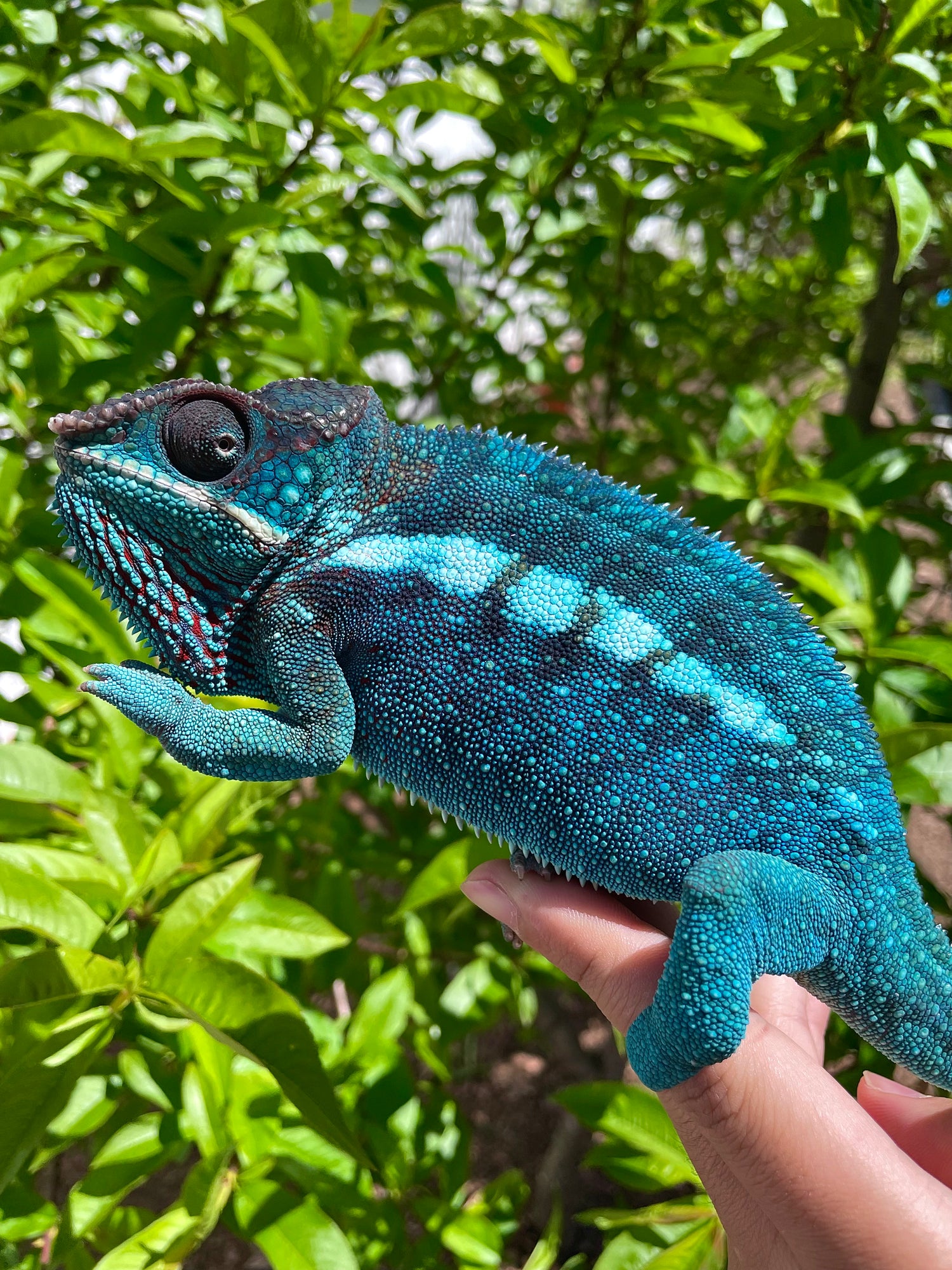
Barney
Blue Ambanja Panther Chameleon
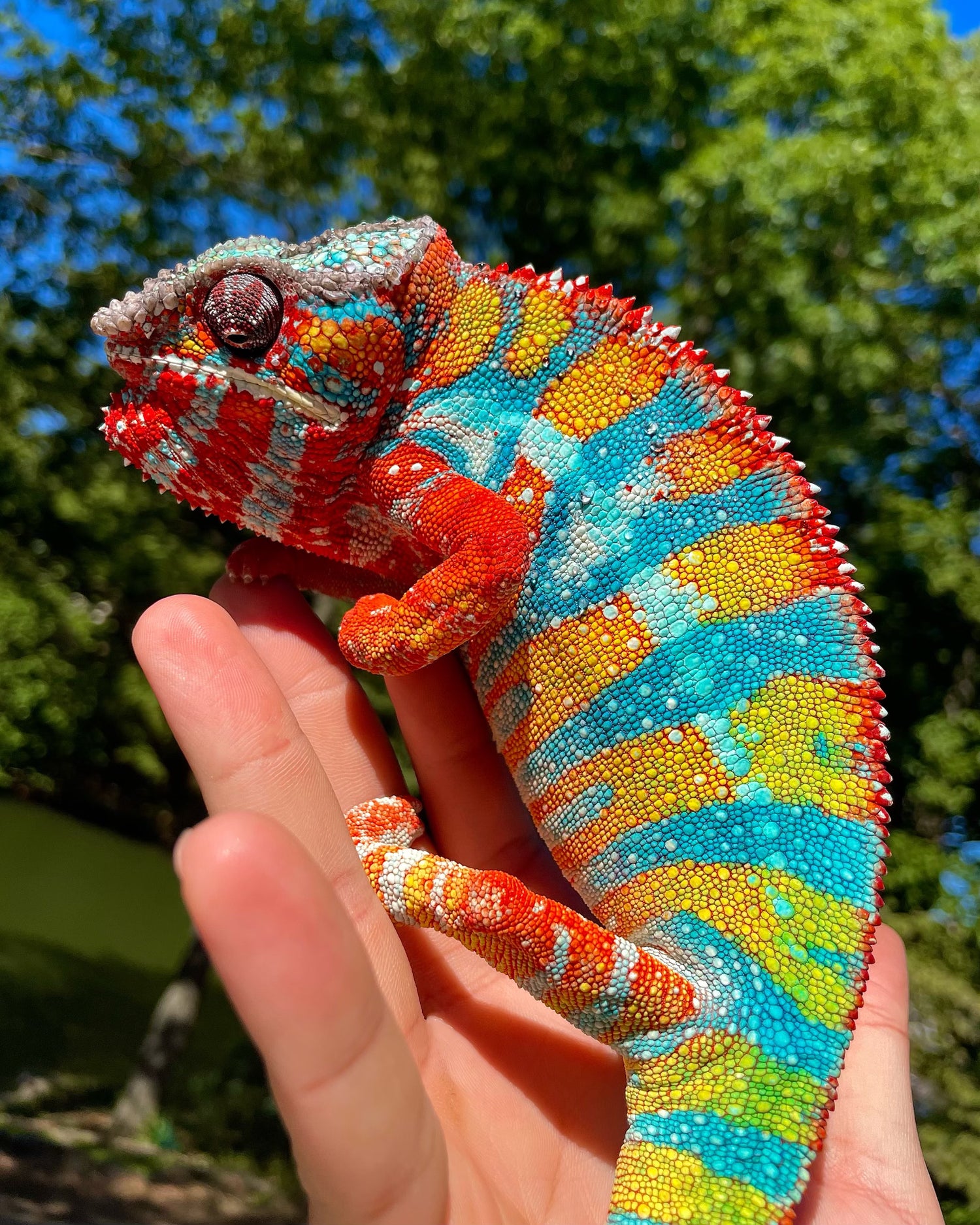
Dyno
Rainbow Ambilobe Panther Chameleon
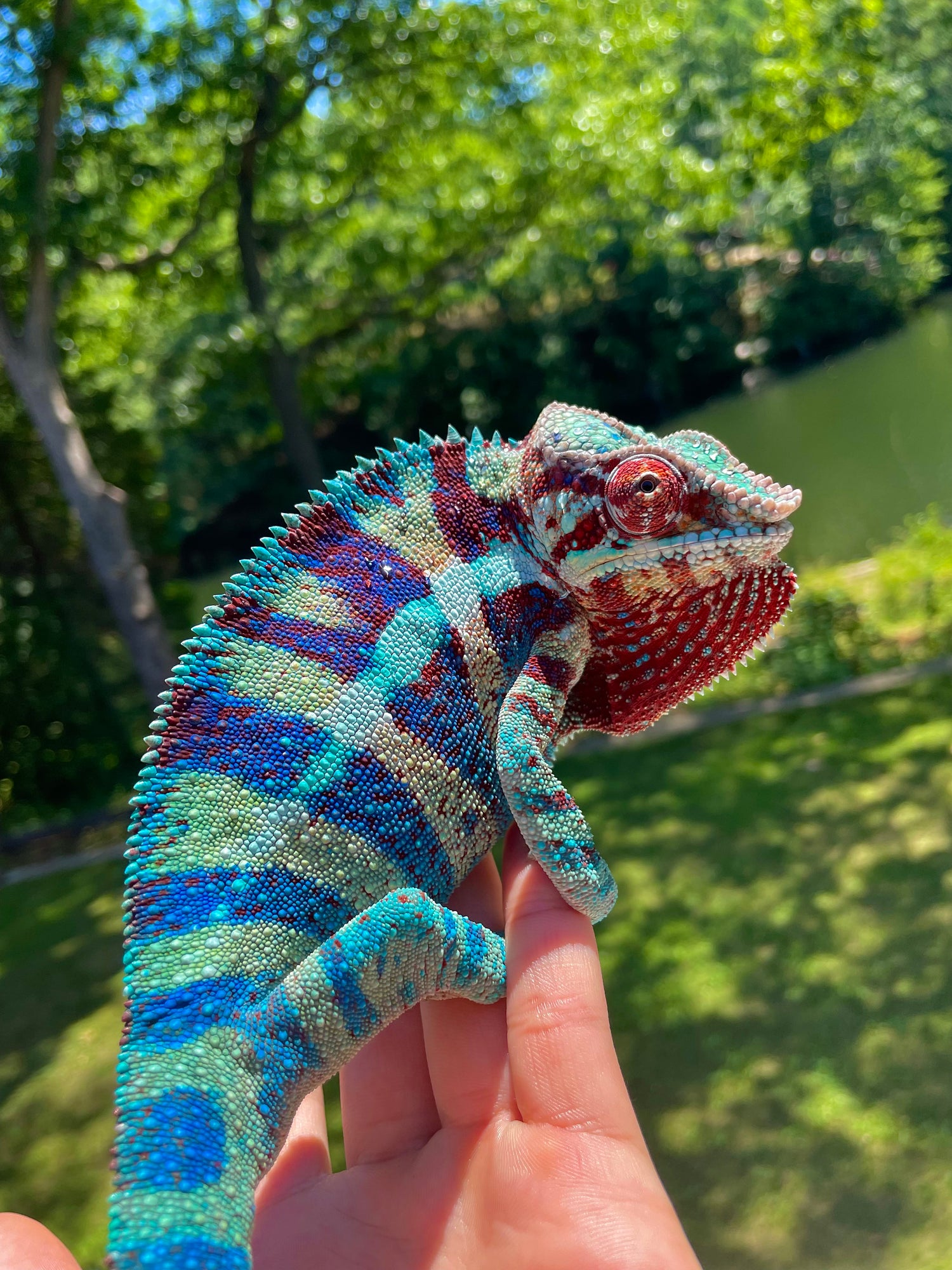
Pegasus
Ambanja Panther Chameleon
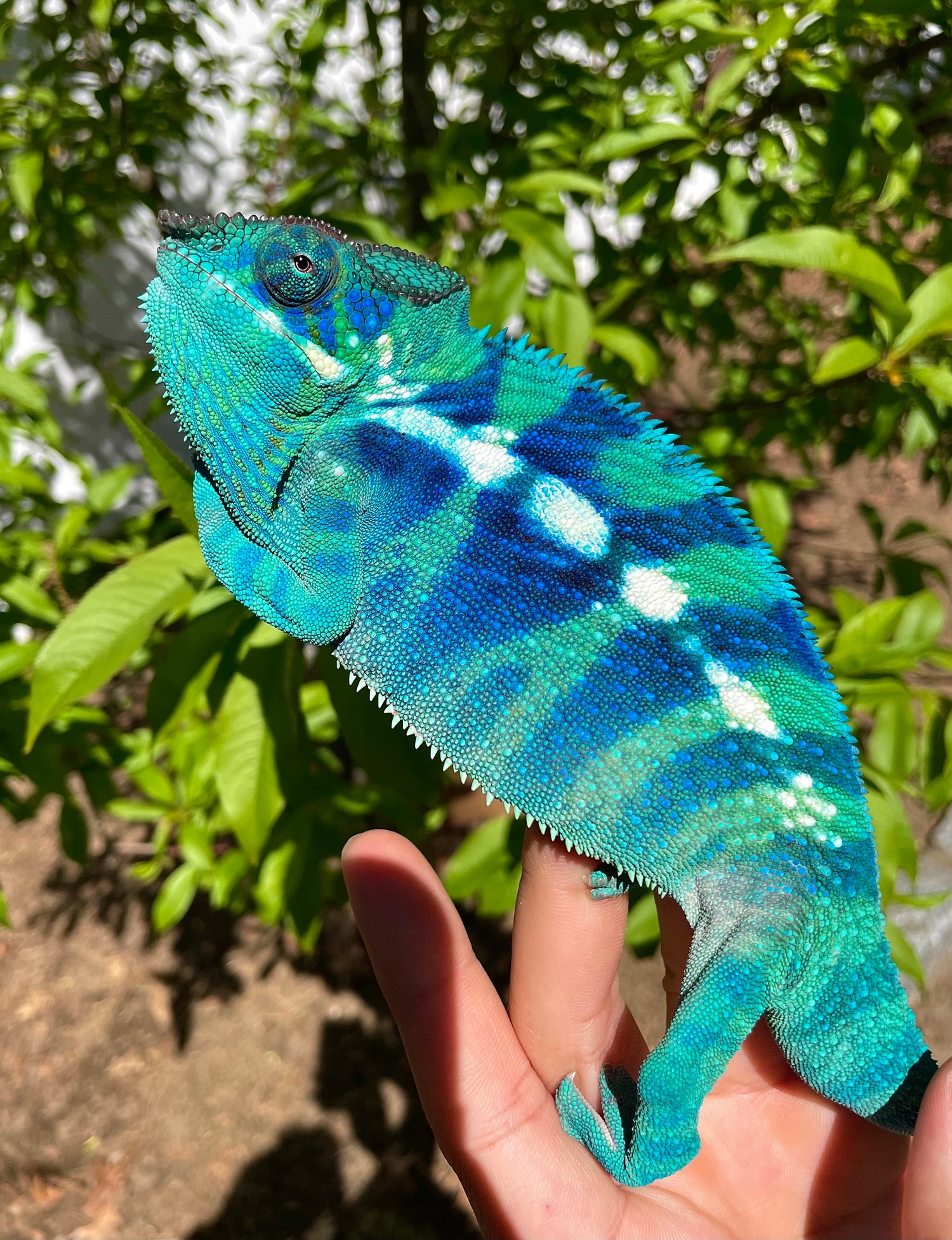
Peacock
Ambanja Panther Chameleon
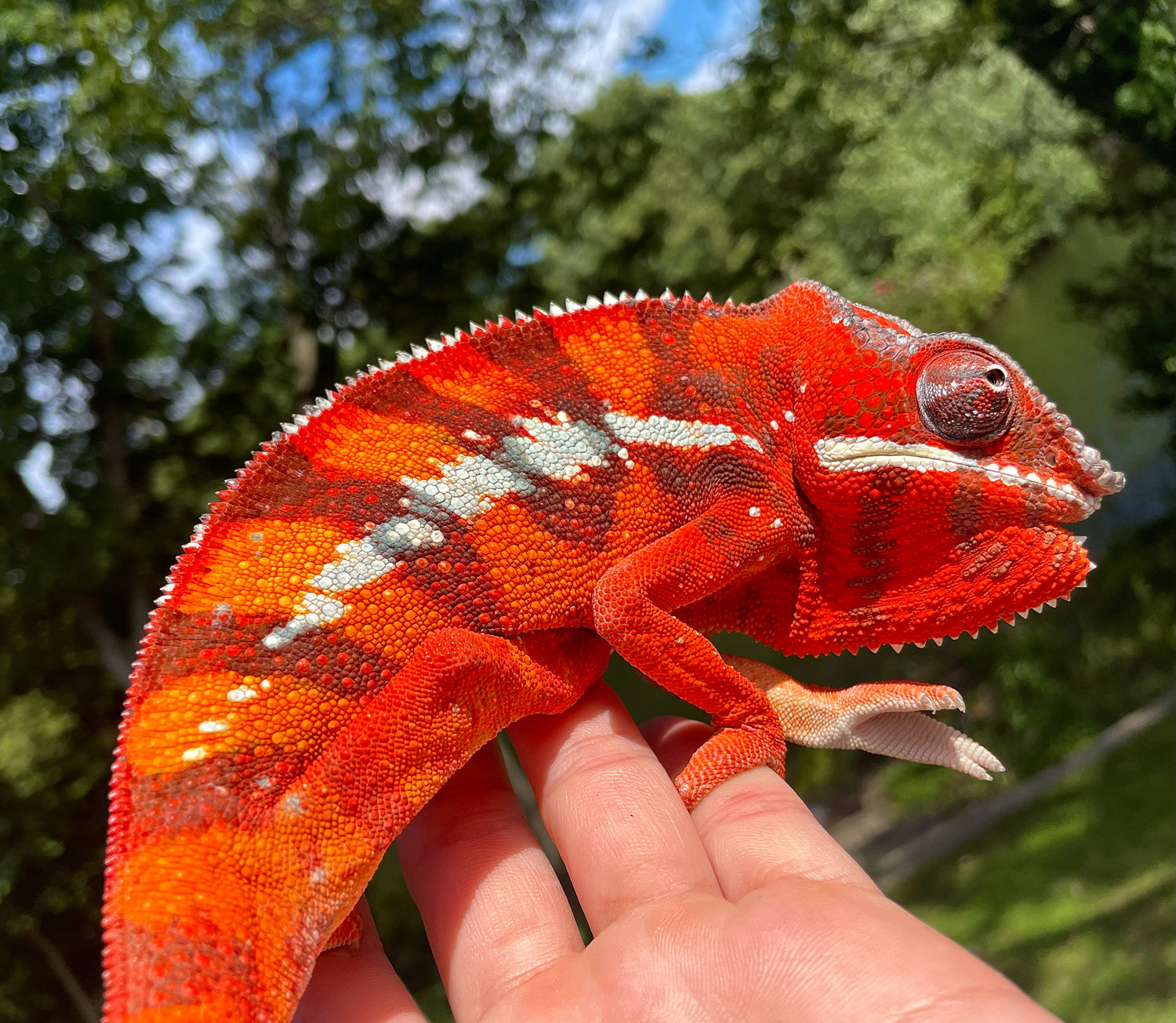
Skywalker
Sambava Panther Chameleon
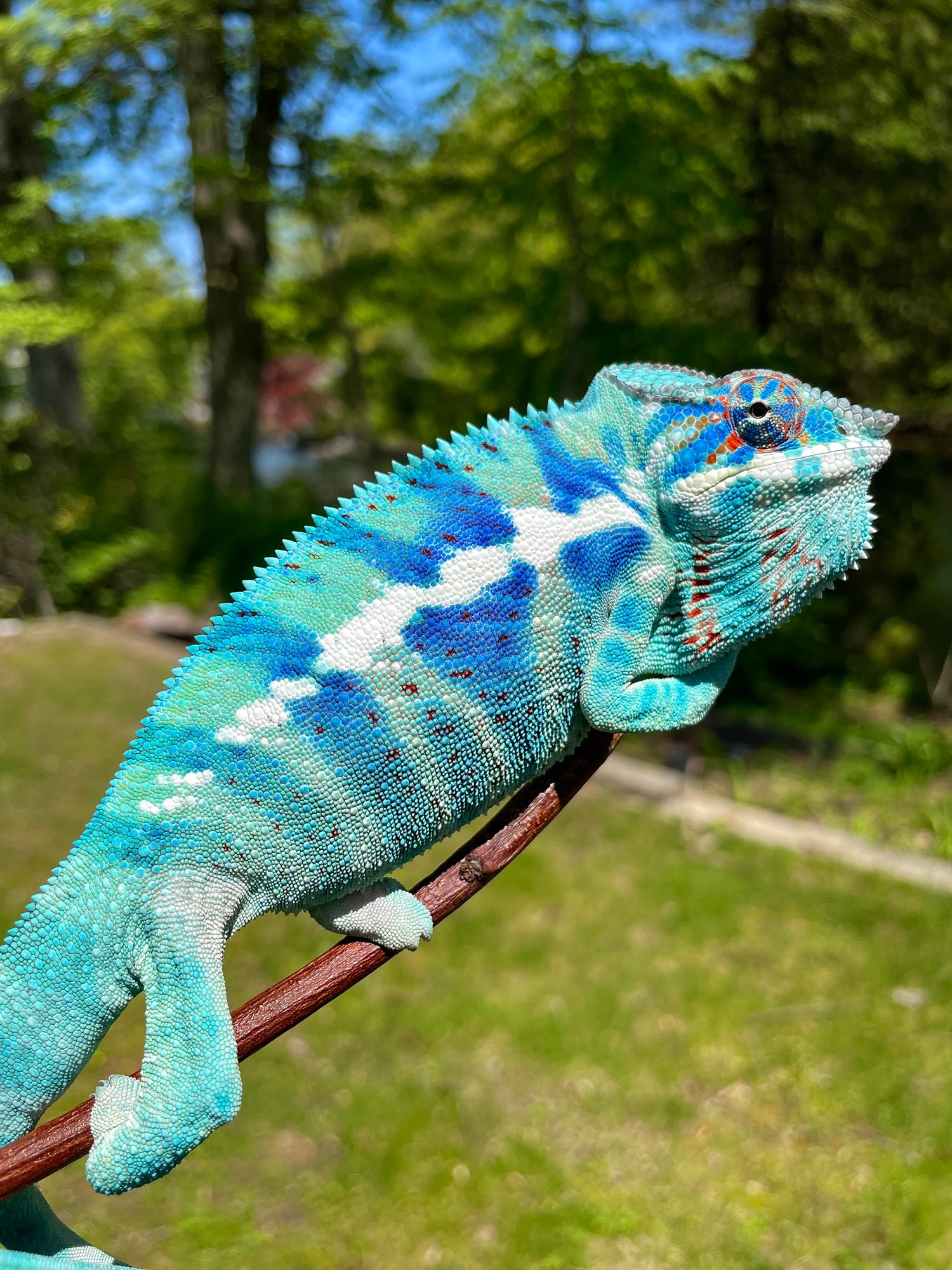
Poseidon
Blue Ambanja X Nosy Be Panther Chameleon
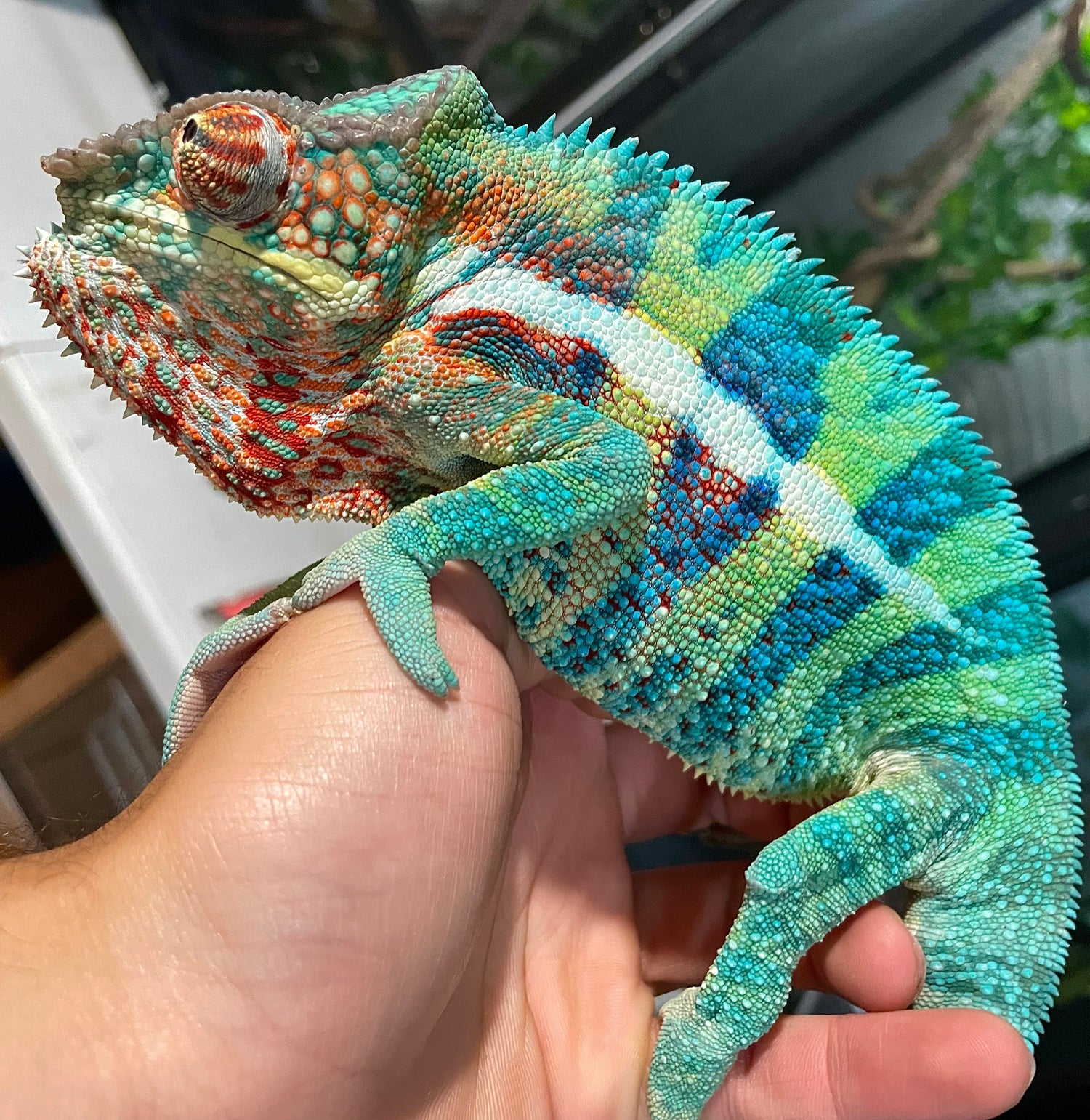
Grinch
Ankify Panther Chameleon
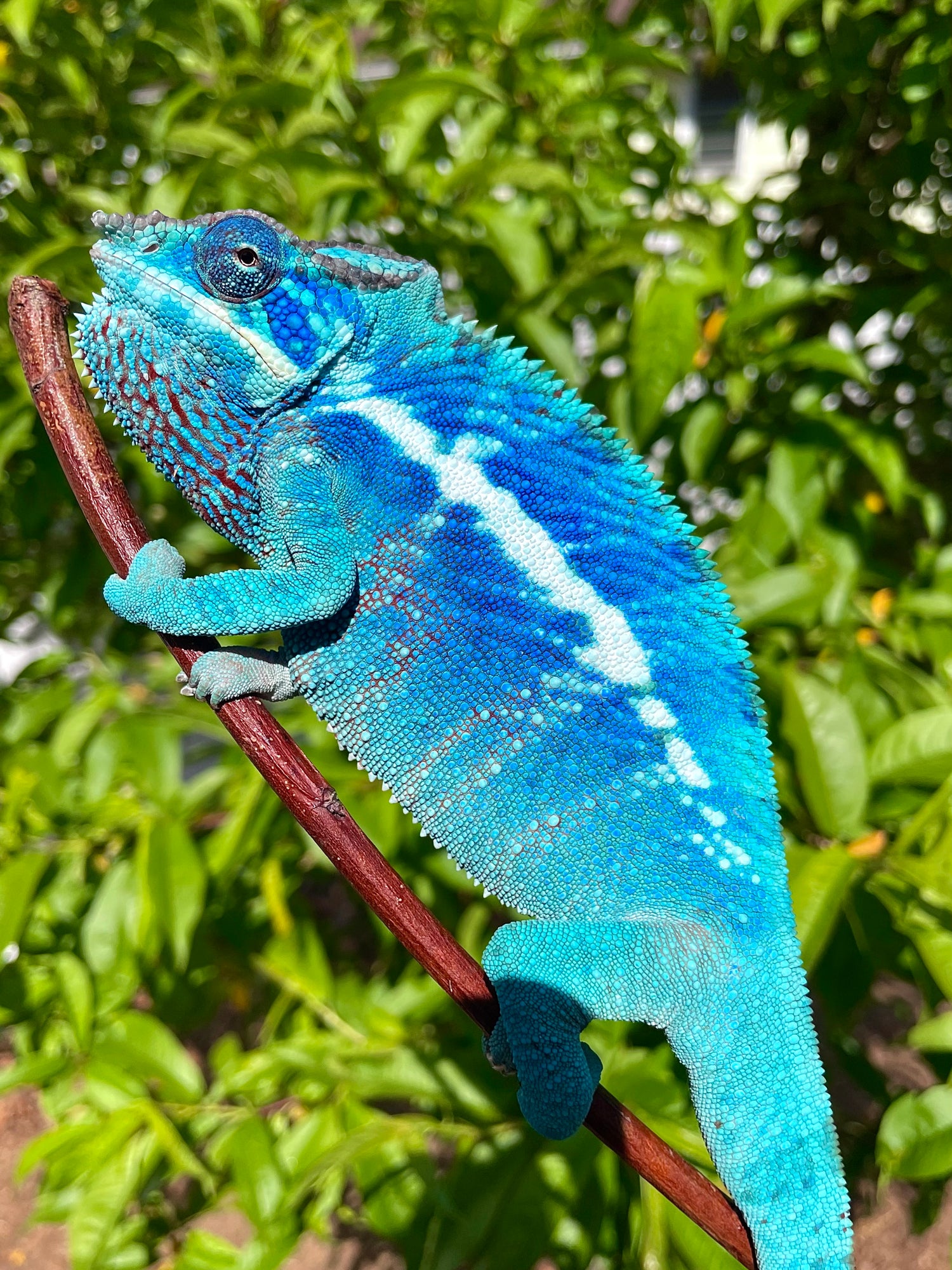
Blueberry
Blue Ambanja Panther Chameleon
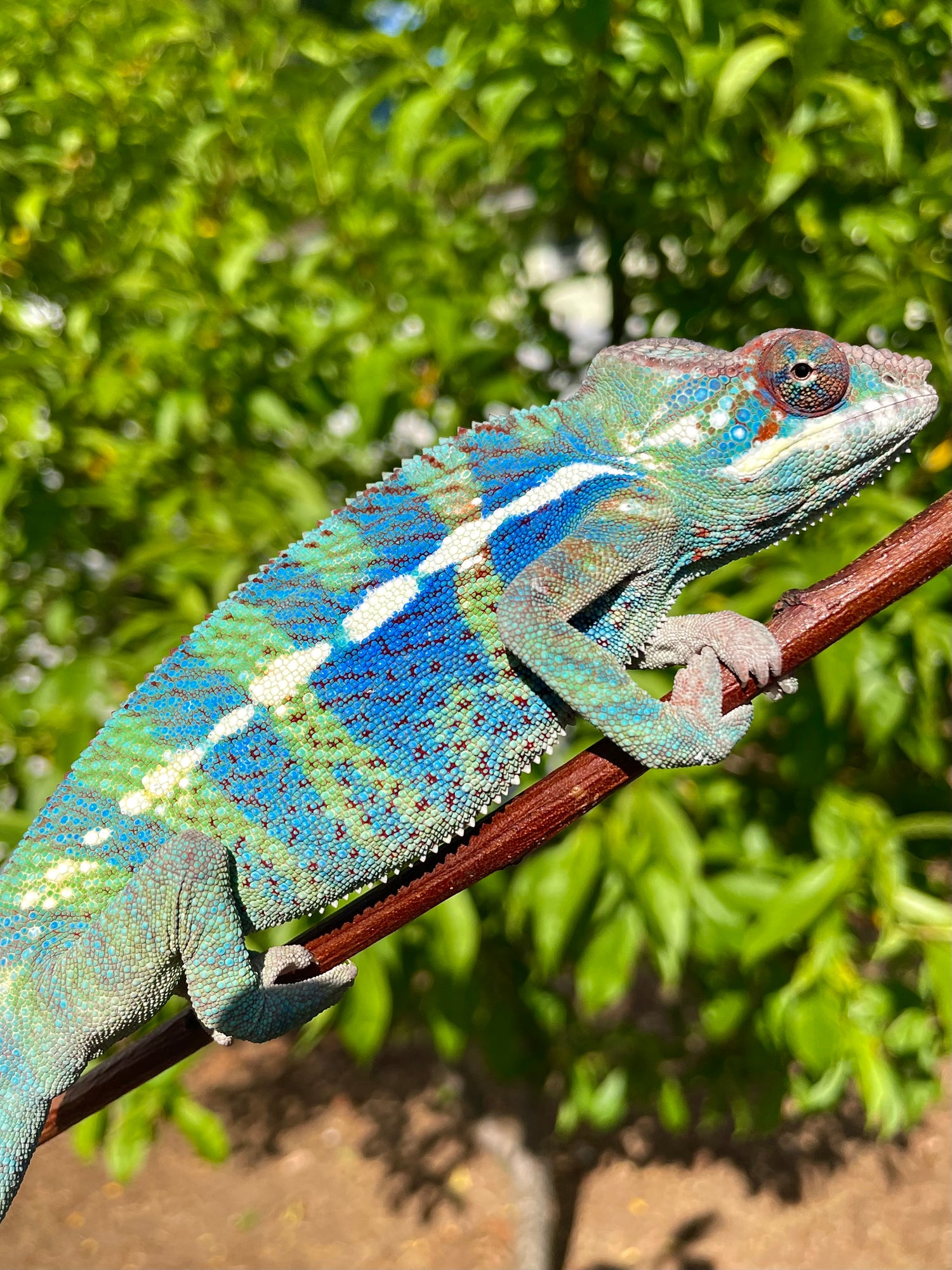
Kaws
Ambilobe X Ambanja Panther Chameleon
